Lead acid battery for powering F3B winch is very important part of whole launching system; winch-battery-line. F3B rules have exact specification which battery can be used:
5.3.2.2. Launching
d) The power source shall be a 12 volt lead/acid battery. The cold cranking capability of the winch battery must be specified according to one of the following standards:
300 amperes max. according to DIN 43539-02 (30s/9V at –18OC)
355 amperes max. according to IEC/CEI 95-1 (60s/8,4V at –18OC)
500 amperes max. according to SAE J537, 30s Test (30s/7,2V at 0 OF)
510 amperes max. according to EN 60095-1 (10s/7.5V at –18OC)
Other standards are acceptable if evidence is provided that these standards are equivalent to one of the above stated standards.
Since ever it’s evident that there is slight contradiction. All these norms (DIN, IEC…) were designed for automotive industry. Actually these standards quarantee MINIMUM cold cranking capability aka CCA (Cold Cranking Amps) for our cars. Seems to me we would like to use these standards to quarantee MAXIMUM cold cranking capability, but that’s not our case.
Just one example. My favorite winch battery Optima Yellow Top S27 (article only in Czech, sorry) states on cover 460A (EN) but in reality it has more than 550A (EN). Measured by Argus Analyzer (article only in Czech, sorry)
The most important parameter of today’s F3B pair-winch-battery-is internal resistance of whole system i.e. 0.023Ohm minimum.
In F3B Arnhem I was watching strange wooden/plexiglas box with LiPo batteries on Jens Buchert’s car. Originally I thought that this pack is used for powering some big electro glider-mistake! This is normal starting F3B winch battery. Idea comes from Markus Wanner and I like it. Guys are using this battery on training (using some extra resistance, LiPo’s have very low Ri) and on contest they use it as power container for recharging standard Lead Acid batteries. Note, that Jens was charging this LiPo pack from car battery, ecological thinking, well done!
Just imagine you have F3B winch battery weighing about 2kg (!). Lithium technology is far efficient than Lead Acid and has many other advantages. Today there are even better LiXxx technologies like LiFePO4, LiFeYPO4. More secure and durable than classic LiPo. The only issue I see today is price, but it’s slowly changing. Shall we stay with Lead Acid winch battery forever?

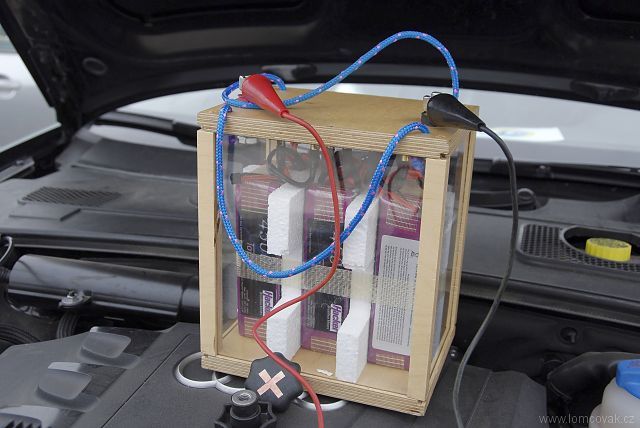
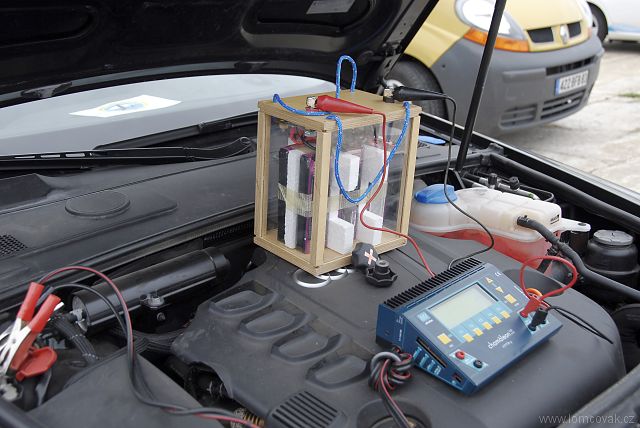
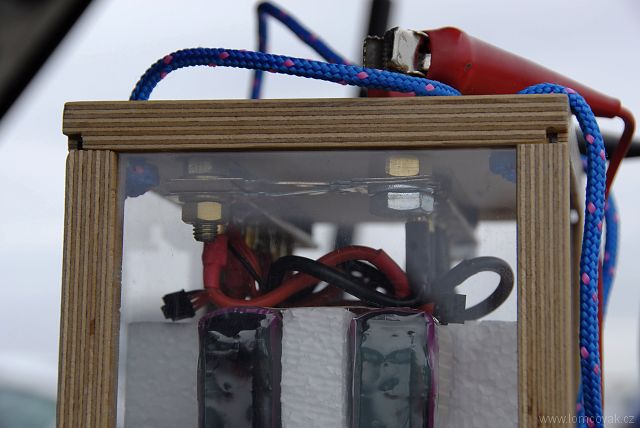

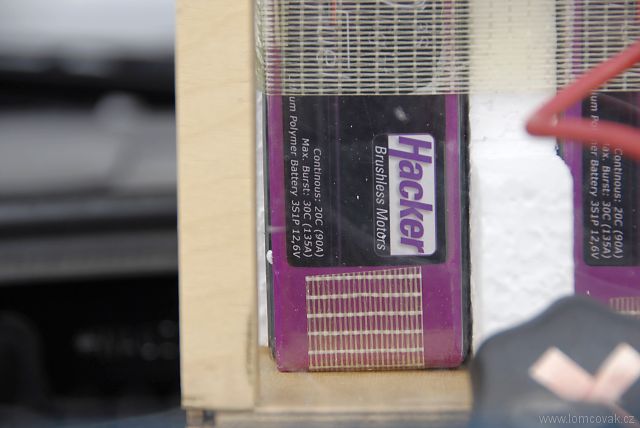
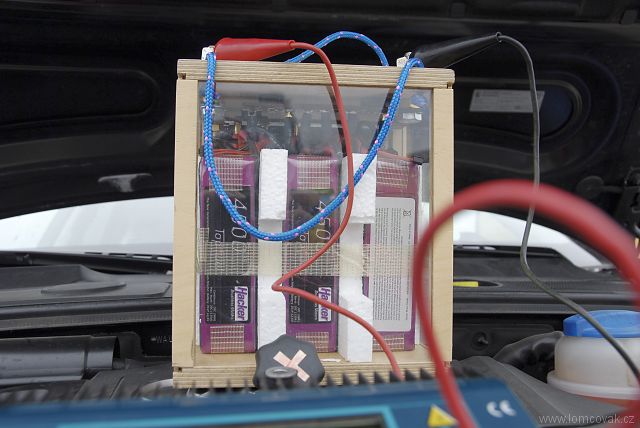
Hello Roman,
Just a question of lack of availlabillity for me but if I find time to prepare a proposal, I agree with you that batteries concerns should be adressed better than today. It will be nice to propose a new approach to FAI (based on a measurement system for the “whole chain”)
– first concern is that it becomes more and more difficult to find lead Acid batteries 510 a EN
– second is that we need to trust in the manufacturer’s informations even if we find 510 a EN batteries. Today, we jump from 480 to 570 and not sure the 570 batteries are really different than previous 510 ? Few people are able to check their batteries characteristics. (and should we trust in manufacturer or pilots ?)
– Third is with technology and two different 510 EN batteries might have different behavior (Calcium addition, other parameters which give different current curve/time)
– Capacity : if there are no performance advantage in using a 570 EN (except number of launches), who minds?
– Weight, transport, price: When I saw Italian friends with their huge “GEL” batteries, I have been afraid ! Probably very heavy, expensive, less place in the car … probablly for some small advantage during 9-10 first seconds …
So If someone is able to propose a new rule than today (Batteries + system measurement), especially taking benefit of your “green” ideas, sure we will push in the same direction !
Regards
Sylvain
Hi Sylvain,
“- first concern is that it becomes more and more difficult to find lead Acid batteries 510 a EN”
Yes, this situation lasts at least three years.
“- second is that we need to trust in the manufacturer’s informations even if we find 510 a EN batteries. Today, we jump from 480 to 570 and not sure the 570 batteries are really different than previous 510 ? Few people are able to check their batteries characteristics. (and should we trust in manufacturer or pilots ?)”
Yes, I don’t even check (…and I was never checking) how mentioned norms/standards are changed in time and how this value on batteries is measured by producer. But as you can feel from my article above, this value (CCA) I treat today meaningless.
“- Capacity : if there are no performance advantage in using a 570 EN (except number of launches), who minds?”
There is one interesting parametr for us-internal resistance of battery Ri-and to be more precise, how Ri is changing in time i.e. during F3B launch which takes let’s say about 10sec in average.
Some batteries will die very soon. Some keep power longer time. Anyhow both batteries must fullfill 0.23mOhm rule. I don’t think capacity is issue. For me is better to carry 4 “light” batteries and change them sooner. Than to pull 90Ah/35kg dinosaurus. On contest, capacity is no issue at all, while everybody is charging battery after 3-4 launches. Some paranoia pilots even after every launch.
“- Weight, transport, price: When I saw Italian friends with their huge “GEL” batteries, I have been afraid ! Probably very heavy, expensive, less place in the car … probablly for some small advantage during 9-10 first seconds …”
I don’t think so there is any advantage of gel batteries not even during first 9-10 seconds. Maybe deep cycle resistance during longer lifespan, that’s all.
As I wrote above, I wouldn’t switch back to “classic” wet lead acid battery from Optima, never. Future of our batteries is really not at Lead Acid. It’s cheap, that’s the only advantage today.
As regards FAI rule change proposals we should talk to Ralf Decker. He is very experienced and maybe he can give us another point of view to the whole matter. If he will be in F3B Dresden I will talk to him.
Hi Sylvain,
as promissed I was shortly talking at F3B Nardt to Ralf Decker. Under Ralf’s statement main reason for battery norm specification (EC, DIN, IEC…) is to help CD for first view to distinguish batteries looking not “so usuall” from “usuall” ones.
If there will be no norms limit, position of organizer will a bit complicated, while he will be in doubt if it meets “usuall or expected” parameters.
As I wrote above, the only important parameter of whole launching set today is internal resistance. Everybody who wants NOT to full fill 0.023 rule can use “standard” looking battery and CD will be more relaxed? I don’t think so.
Necesarry to say that Ralf didn’t reject any change possibility. That’s status of whole matter today as I understand it.
Hi Roman
Do you still consider the optima yellow top to be the best choice? I am looking to moved away from Yuasa to sealed batteries.
Cheers
Tom
Hi Tom,
nothing changed in my opinion. The only drawback is that price of Optima is again higher (cca 180EUR incl. 21% VAT), at least here in CZE.